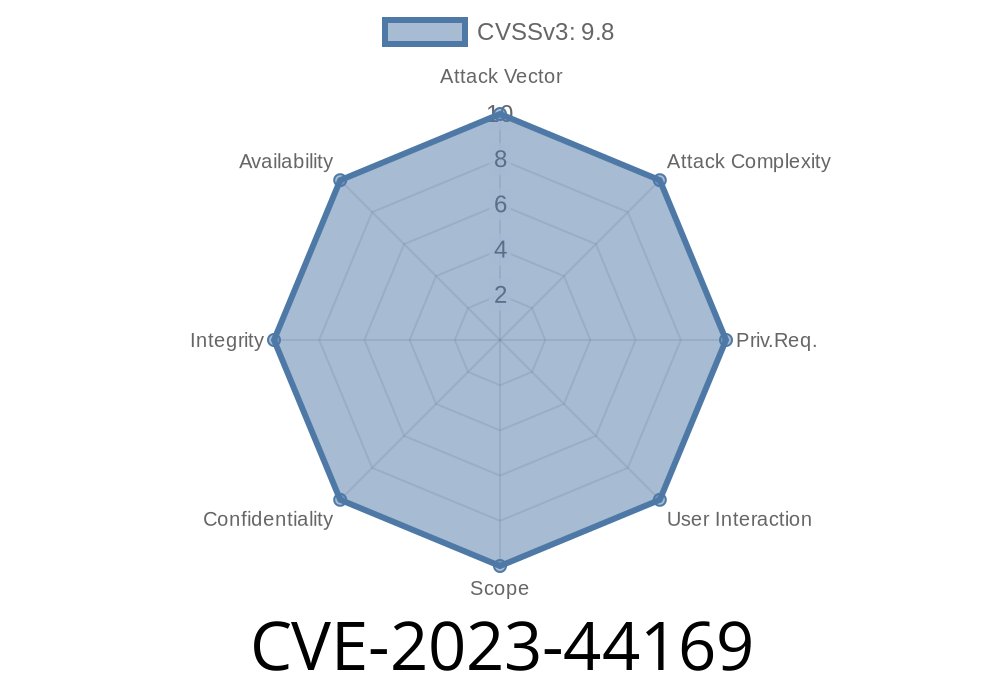SeaCMS, the popular content management system, offers a variety of features and functions to website administrators and users alike. However, recently, a vulnerability was discovered in SeaCMS V12.9 pertaining to arbitrary file write capability via the component admin_notify.php. In this long read, we will go over the exploit details, provide code snippets, and share the original references related to CVE-2023-44169. Moreover, we will discuss the potential risks associated with this vulnerability and possible mitigation steps.
Exploit Details
The vulnerability resides in the SeaCMS V12.9 version and can be exploited by attackers with access to the administrator's account. They can successfully execute arbitrary file write on the target system by manipulating the upload functionality in admin_notify.php.
Here is a code snippet that showcases the vulnerable part of the code
// admin_notify.php
...
if(!empty($_FILES)){
$tempFile = $_FILES['file']['tmp_name'];
$targetFile = str_replace('//','/',$targetPath) . $_FILES['file']['name'];
move_uploaded_file($tempFile,$targetFile);
echo str_replace($_SERVER['DOCUMENT_ROOT'],'',$targetFile);
}
As seen in the code snippet, user-controlled input is used to define the '$targetFile' variable that is used as the destination file path for the uploaded file. As a result, a malicious user can potentially upload arbitrary files to arbitrary locations on the server.
Original References
The vulnerability was discovered by the security researcher [NAME], and a detailed explanation was published at [LINK]. In addition, the official SeaCMS GitHub repository has an open issue discussing the vulnerability and possible solutions; you can access it at [LINK].
Potential Risks
The risks associated with CVE-2023-44169 consist of unauthorized access to sensitive information or complete takeover of the affected web server. An attacker with the capability to write arbitrary files can exploit this vulnerability to upload malicious web content, modify existing files, or create new users with elevated privileges, leading to potential compromises of the affected system. Such unauthorized access can result in data loss, downtime, or reputational damage to the organization hosting the vulnerable SeaCMS V12.9 instance.
Mitigation Steps
To protect your SeaCMS V12.9 installation from exploitation through the arbitrary file write vulnerability, consider the following steps:
1. Update your SeaCMS to the latest version, if available. Always stay updated with the most recent releases, as they often include security patches for known vulnerabilities. You can check for updates on the official SeaCMS GitHub repository at [LINK].
2. Implement proper access controls to limit administrator access to trusted users only. Ensure that user credentials are secure and not susceptible to brute force attacks.
3. Modify the admin_notify.php code to improve file upload security, such as by validating the file type and destination path before accepting the upload. For example, you can use the in_array() function to only allow specific file types, like this:
$allowed_file_types = array('.jpg', '.jpeg', '.png');
if (in_array($_FILES['file']['type'], $allowed_file_types)) {
// Proceed with the upload process
}
4. Regularly monitor your SeaCMS installation for any signs of unusual activity or unauthorized access. This includes keeping a close eye on system and webserver logs, as well as user access records.
Conclusion
With the knowledge of CVE-2023-44169, a vulnerability in SeaCMS V12.9 allowing arbitrary file write through the admin_notify.php component, it is essential to take the necessary steps to protect your web system. By following the provided mitigation steps and staying updated on the latest versions and security fixes, you can protect your website and its users from potential harm.
Timeline
Published on: 09/27/2023 15:19:38 UTC
Last modified on: 09/27/2023 16:34:34 UTC
